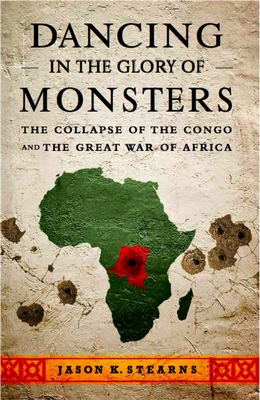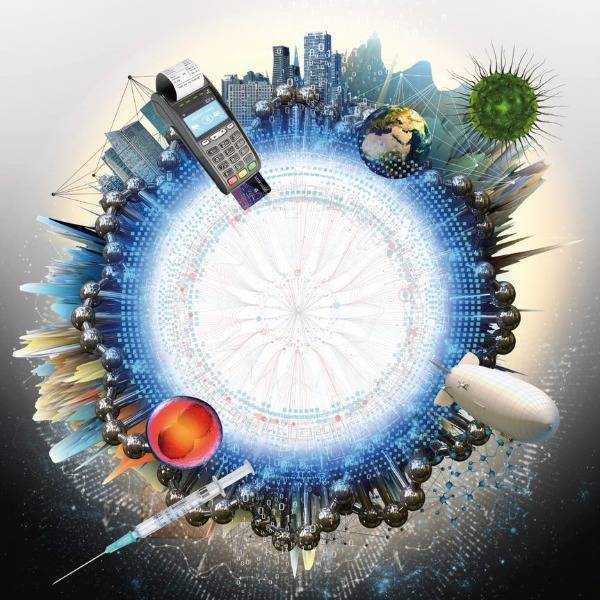Dancing in the Glory of Monsters by Jason Stearns
 “Thousands returned to Rwanda on their own,” recounts Papy Kamanzi. “But there were some remaining in the area, those who couldn’t flee ... The sick and weak. We lied to them. We said we would send them home; we even cooked food for them. But then we took them into the forest. We had a small hatchet we carried on our backs, an agafuni. We killed with that.”
“Thousands returned to Rwanda on their own,” recounts Papy Kamanzi. “But there were some remaining in the area, those who couldn’t flee ... The sick and weak. We lied to them. We said we would send them home; we even cooked food for them. But then we took them into the forest. We had a small hatchet we carried on our backs, an agafuni. We killed with that.”
When, in July 1994, Rwanda’s genocidal government was overthrown by the Tutsi-led Rwandan Patriotic Front (RPF), the defeated army fled to the forests of neighbouring Zaire, along with their heavy weapons and a million Hutu civilians. Two years later, the RPF crossed the border and attacked the refugee camps, massacring thousands and driving many more into the jungle to be killed by hunger and disease.
The ensuing conflict ended the 30-year reign of the notorious kleptocrat Mobutu Sese Seko, triggered the final collapse of the dysfunctional Zairean state and led to its hopeful relaunch as the “Democratic Republic of Congo”. But what had started as a battle over security quickly descended into a murderous struggle for control of the country’s fabulous mineral resources.
Eight other African countries became embroiled, along with a dizzying array of rebel militias, both foreign and indigenous. For a decade, the civilian population was systematically robbed, raped, massacred, displaced and conscripted as the warlords competed for territory and power. By 2008, a staggering 5.4 million people had died, a figure that surpasses every other conflict since World War II.
Rwanda’s genocide has been the subject of many excellent books, documentaries and at least one blockbuster Hollywood movie. Yet what happened next was a horror of even greater proportions, and one that has received far less attention. In Dancing in the Glory of Monsters, Jason Stearns begins to redress the balance with one of the most gripping and comprehensive accounts of this human tragedy yet written.
Stearns argues convincingly for Congo’s war to be “put among the other great human cataclysms of our time” – the two World Wars, Mao’s Great Leap Forward, the Rwandan and Cambodian genocides. But he also sets himself a far greater challenge – “to offer a rational explanation for a truly chaotic conflict”. For all its horrors, Stearns insists that the principal actors in this drama are “far from just savages, mindlessly killing and being killed, but thinking, breathing Homo sapiens, whose actions, however abhorrent, are underpinned by political rationales and motives.”
It is this conviction that makes the book so compelling, as the author recounts one of history’s most devastating wars through interviews with dozens of its protagonists and survivors. We hear from Patrick Karegeya, the intelligence chief who directed many of Rwanda’s operations in Congo – and Beatrice Umutesi, the Hutu refugee who trekked “a thousand miles through the jungle” harried and pursued by Rwandan forces.
We hear first-hand about the vicious training of the child soldiers who helped overthrow Mobutu, the cynicism of the leaders who inflamed ethnic tensions for political ends (“we didn’t believe it, but in a guerrilla war you have to motivate soldiers and indoctrinate the population”), and about the shady networks of businessmen, local and international, who profited from it all.
Congo’s war officially ended with a peace deal in 2002. The rival militias were merged into a single national army, while powerful military and government posts were shared out among the warlords. What could possibly go wrong?
Fighting continued until 2009, amid a further peace agreement and further hand-outs. For the moment, at least, the conflict has died down, but mass rapes, political repression and targeted killings have continued, while corruption remains endemic.
One response to Congo’s horrors is to assume that those responsible are simply monsters, different in kind from the rest of humanity. Another is to view the perpetrators as victims, swept along by a collective insanity, their actions less individual choices than the inevitable products of historical injustice. Both these positions allow us to dodge the uncomfortable notion that a person fundamentally like ourselves might freely choose to engage in such brutality – that the same instincts and impulses that drove Congo’s killers and collaborators might also exist within us.
Stearns offers little reassurance. The book’s great achievement is instead to show how such a monumental disaster could unfold as the cumulative product of a series of very human individual choices and moral compromises. Extreme though the circumstances, these often seem like recognisable versions of the dilemmas we face in our own lives – backed by excuses that we might imagine ourselves making.
“In the Congo, in order to survive, we all have to be a bit corrupt, a bit ruthless,” one parliamentarian tells Stearns. “If you don’t bribe a bit and play to people’s prejudices, someone else who does will replace you ... Even you, if you were thrown into this system, you would do the same.”
“Politics is always dirty,” says another politician, late on in the book. “You see a free press and political activity – we see opponents, plotting our demise. In order to reform and promote growth, we need to curtail some civil liberties and control part of the economy. It is a lesser evil for the greater good.”
Stearns finds this language “eerily reminiscent of the Mobutu regime’s earlier days”. Congo’s current President, like his predecessors, appears to see the institutions of state as threats to be curtailed and controlled. Yet “what appears to be politically expedient to those in power rarely overlaps with the public interest. The lesser evils of the regime become entrenched, while the greater good is never realised.”
The author ends nonetheless on a positive note, highlighting the “resilience and energy” of the Congolese people. While the country’s fate rests ultimately with them, Stearns believes that the international community still has a role. Three things that could help are “more aggressive and smarter peacekeeping ... more foreign aid that is conditional on political reforms ... and more responsible corporate investment and trade”.
Whether the political will exists for this to happen is harder to say. But Stearns makes a convincing case that greater international understanding is a crucial first step – and if he’s right then this book could be a major contribution.

